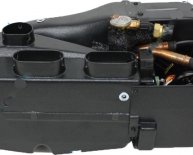
Mini ducts Air Conditioning cost
 In Maryland, the summers are brutally hot. Only ask the Sisson family: beginning around April each year, their particular three-story 1942 stone residence became similar to a brick oven, despite the aid of various window-unit ac units.
In Maryland, the summers are brutally hot. Only ask the Sisson family: beginning around April each year, their particular three-story 1942 stone residence became similar to a brick oven, despite the aid of various window-unit ac units.
They quickly considered setting up a normal central air-con system—“but if we’d done that, ” claims Welmoed Sisson, “we will have lost all our closets for the reason that it’s where in fact the giant material ductwork will have needed to get.” Fortunately for household’s convenience as well as the house’s wellbeing, Welmoed’s husband, Bob—in her terms, “an avowed technogeek”—discovered an alternate answer: a high-velocity, mini-duct HVAC system.
 As the name indicates, the machine pushes conditioned air at large speeds through little ducts. For old-house owners, the key attraction is the fact that the tiny (3″ diameter), versatile ducts could be snaked through walls as well as on top of ceilings without the need to cut huge chases or drop a ceiling. And unlike the large wall-, floor-, or ceiling-mounted environment registers and grilles needed for a normal HVAC system, mini-duct methods deliver trained environment through grilles that are smaller than an audio CD.
As the name indicates, the machine pushes conditioned air at large speeds through little ducts. For old-house owners, the key attraction is the fact that the tiny (3″ diameter), versatile ducts could be snaked through walls as well as on top of ceilings without the need to cut huge chases or drop a ceiling. And unlike the large wall-, floor-, or ceiling-mounted environment registers and grilles needed for a normal HVAC system, mini-duct methods deliver trained environment through grilles that are smaller than an audio CD.
While high-velocity mini-duct systems are often used to cool old homes being heated by radiators, they also enables you to provide heat. Two businesses inside U.S., Unico and SpacePak plus one Canadian company, , manufacture total systems that also are mixed and matched along with other companies’ furnaces and air-conditioning elements.
HVAC Basics
Having some basic knowledge about just how standard hvac systems work can help you understand what’s involved with setting up a mini-duct system. An air conditioner does make spaces cooler, exactly what it’s in fact performing is eliminating the warmth from atmosphere within your house. Much more precisely, it moves the warmth in the household toward exterior.
Main air-conditioning methods tend to be comprised of both interior and outside elements. a closed-loop of copper tubing includes a refrigerant, popularly known as Freon, this is certainly continuously distributed from the inside of the home toward outside, then back.
You’ve truly seen the outside part of an air-conditioning system—the compressor/condenser device, that will be typically set on a tangible pad from the shady side of the residence, making a good amount of sound and offering off a large amount of heat.
Inside is a matrix of ductwork connected to a plenum, which is a large air circulation field. From plenum, one system of ducts delivers cooled environment into areas through vents from the flooring, wall space, or ceilings. An extra duct system, known as the return, brings warm air through the areas. Connected to the plenum is an air handler with an admirer and an evaporator inside.



















